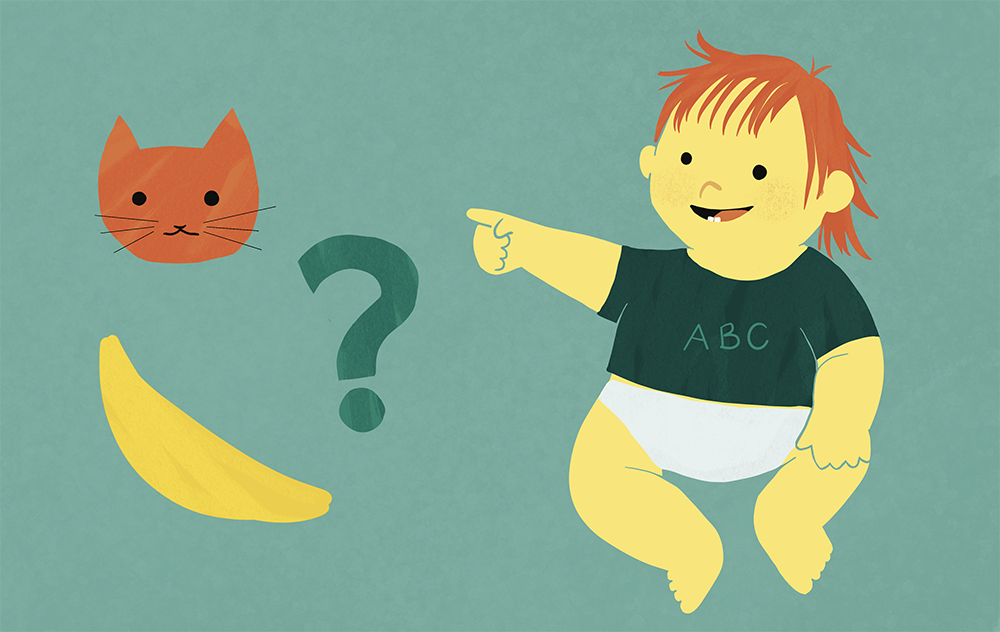Perhaps not surprisingly, children’s earliest words are often for things and actions relevant to them. The one-word stage occurs between nine and 18 months of age, though understanding of simple labels happens even earlier, starting from around six months. Aside from names for caregivers, the most common first words are related to toys (ball, car, teddy) or food (water, milk, banana). This pattern was also noticeable in my daughter, who’s first word was ‘more’ with an eating gesture– who can blame her? She would go on about things she found interesting, such as cars or cats, and would especially repeat those particular labels when out and about during our walks. She would spot a cat in a window, even though I hadn’t noticed it, almost as if her attention was geared to the things she already had a name for.
So how do children start to learn their first words? One principle which helps them is that of ‘mutual exclusivity’. This refers to the tendency to assign a single word label to an object. Within a language, it is very rare to see multiple word labels for a single object. So a child’s knowledge of an already acquired association between a word and an object helps them to figure out that a new sound they hear can only refer to a new object. Imagine having a play session with a child who already knows the word ‘dog’, but not the word ‘badger’. On the floor you lay a dog plushie and a badger plushie. You then ask: “Could you give me the badger plushie?” The child will understand that this new word ’badger’ refers to the badger plushie, because they know that the label ‘dog’ exclusively refers to the dog plushie.
However, knowing that one word refers to only one object, is not fully sufficient for word learning. At some point, toddlers must realize that some objects in the world have the same name, even though they can look quite different. They have to learn that ‘cat’ does not only refer to Tommy, the tabby house cat with the white left hind paw, but also to the old toy cat at granny’s house. They learn to generalize: one word can refer to multiple examples of an object. During the lockdown, my daughter also started generalising, though only to an extent. For example, she learned that rain could be wet, so she labeled rivers and lakes as wet too, but would not use the same word for her drink. Interestingly, children often go through a phase of overgeneralization. For example, they say ‘car’ to any driving vehicle. My daughter, too, would generalise busses to her existing category of ‘car’ before learning the specific label ‘bus’.
Almost a year down the line, and currently in another COVID lockdown, my daughter’s understanding of words has evolved a lot in a short amount of time. At 2.5 years old, she now strings together three or more words, is experimenting with using the past tense, and her vocabulary has just sky-rocketed. Nevertheless, pronouncing newly understood words still remains tricky for her, but more on that next time…
Pictures
– header: own production
Writer: Julia Misersky
Editor: Julia Egger
Dutch translation: Elly Koutamanis
German translation: Julia Misersky
Final editing: Merel Wolf

